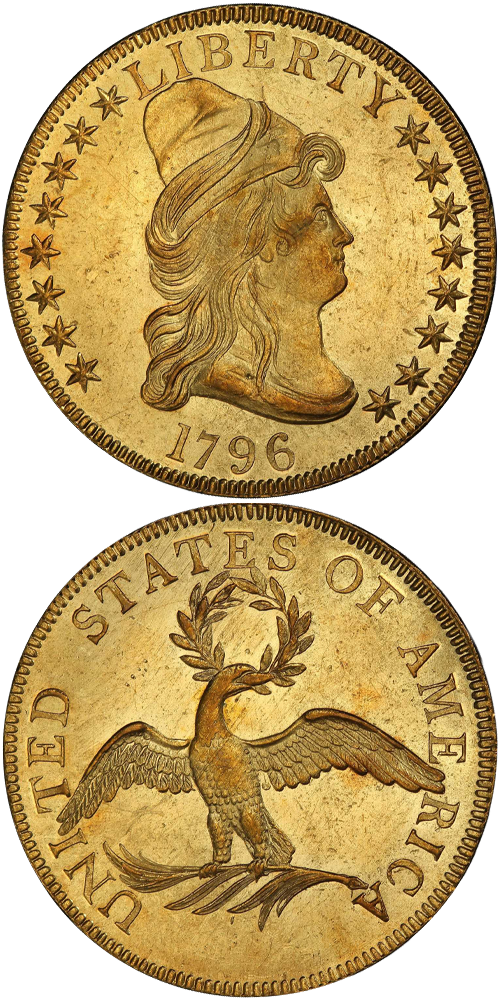1796 Capped Bust Right Eagle
Struck with 16 stars to mark Tennessee’s entry into the Union, the 1796 eagle is underappreciated for both its scarcity and its historical importance. The Mint Director’s Report for 1796 offers an interesting view into the internal processes of the United States Mint. Queried relentlessly by Congress, Elias Boudinot admitted his disappointment at the "opinion generally prevailing, that the establishment is unnecessarily expensive, and less productive than was rationally expected by its advocates and friends." To combat that attitude, Boudinot attempted to make the Mint's inner functions as transparent as possible, revealing to Congress the names of those who deposited bullion to be struck, the size and form of each deposit, and other details. The data he submitted to Congress exposed many inefficiencies at the Mint, including the expense borne entirely by the Mint (and, thus, the nation) to refine low purity deposits, the idle hours waiting for bullion to be deposited since no mechanism existed for the Mint to purchase its own, and the learning curve that striking precious metal coinage required.
Boudinot also discovered that the United States Mint had competition from American counterfeiters who produced gold coins for export to the West Indies, revealed "by a number of new half-johannes brought to the Mint for assaying, said to have been coined in the United States." Purporting to be Brazilian or Portuguese gold coins, these counterfeits had earlier come to the notice of Boudinot’s predecessor, Henry William DeSaussure, who complained in 1795 that "so much of the gold bullion which would be brought to the national mint is carried to these private establishments, which degrade our national character." These counterfeiting operations, "said to be boldly erected at Baltimore and elsewhere," according to DeSaussure, undoubtedly drained away gold that would have otherwise been turned into 1796 eagles. Considering that every additional deposit cost the Mint money in assaying and refining costs, this may have been better for the institution, however, it resulted in the rarity of coins like this today.
Only one die variety of this date is known, a combination that produced somewhere between 3,500 and 4,146 pieces. Of the specimens known today, most show significant wear, and few boast strong originality. Mint State examples are offered infrequently, and rarely show good eye appeal. John W. Dannreuther (Early U.S. Gold Coin Varieties: A Study of Die States, 1795-1834) provides an estimated mintage for 1796-dated coinage of 3,500 to 4,146 pieces. The author accounts for just 125 to 175 survivors, confirming this issue as scarcer than the 1795.
The example to the left was sold by Stack's Bowers Galleries in the D. Brent Pogue Part II Auction, where it realized $411,250.






